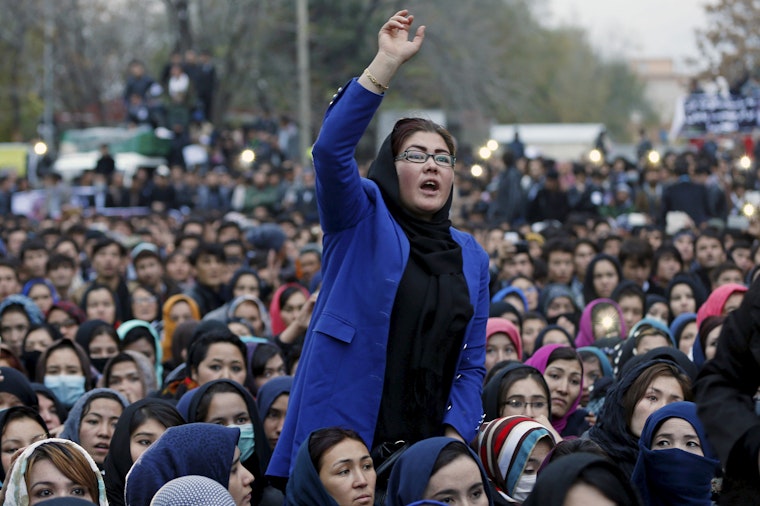How a Protest in Afghanistan Instilled Hope for the Country’s Future
By Shaharzad Akbar

Last Wednesday, I participated in the largest peaceful protests in Kabul’s recent history. Thousands of women and men marched in the cold and rain to demand justice, protection, and safety for all. We were there to protest the beheadings of seven innocent civilians, including a nine-year-old girl, all ethnic Hazaras.
It is not yet clear whether the beheadings were the work of the Taliban, ISIS, or other “foreign” forces. But whoever the killers were, they appeared to have sectarian motives. We protesters, however, did not: thousands of Afghans from different ethnic and religious groups stood together against terrorism and religious extremism. There were parallel marches in Balkh in the north, Ningarhar in the east, and Zabul in the south.
The Kabul protest was organized through Facebook and Twitter by youth and civil society leaders, rather than traditional ethnic “leaders,” who often play a divisive rather than unifying role. Organizers urged people to keep the protest inclusive and peaceful, to welcome all ethnic groups, and to not throw garbage on the streets.
The night vigil leading to the protest and the march was somber and respectful. People carried candles, coffins, and photos of the victims. On the day of the protest, we called for justice and accountability, and expressed our anger at the brutality of the Taliban and ISIS, and our government’s failure to prevent it.
As a woman among the protesters, I felt absolutely safe, which is not how I feel on an average day in Kabul. Crowds of men gave way to women as we moved through the streets. Religious scholars and secular activists marched side by side. The usual divisions—urban and rural, secular and religious, old and young, male and female—melted away in the march.
Identity remains a contentious issue in Afghanistan. The seven murdered civilians were Hazaras, an ethnic minority and a historically persecuted group. After the killings, social media buzzed with ethnically charged anger, with many saying that the largely Pashtun government had not done enough to help the kidnapped victims because of their ethnic identities.
Though identity has not been the defining feature of the recent conflict, many are concerned that Afghanistan’s fragile “unity” government could exacerbate these divisions. The structure of the government rewards ethnic “leaders’’ rather than prioritizing the needs of all citizens. Against this backdrop, we were worried about the potential for ethnic tension and hate speech at the march.
Instead, I saw the opposite: spontaneous acts of leadership and solidarity; young people calling for patience and cool-headedness; hundreds of male and female volunteers organizing the protesters; and young journalists who had gone sleepless for 48 hours, providing continuous coverage for all the world to see.
There was a brief disruption late in the afternoon when a group of angry protesters climbed the security walls around the presidential palace. Security guards fired their guns in the air, and some people were injured. The incident ended minutes after it began. Predictably, some international media have chosen to highlight this short-lived incident at the expense of covering the rest of this historic, overwhelmingly peaceful protest.
I, and many other Afghans, learned a lot about ourselves yesterday. The interethnic nature of the protests shows that Afghans can work together to protect our common identity. This gives me hope that the discussion our country needs to have about ethnic and identity politics can take place inclusively and peacefully.
A new group of leaders is emerging that draws its legitimacy from its commitment to the safety and dignity of communities, not from pitting groups against each other. The demonstrators succeeded in having their concerns heard in person by the president and CEO of Afghanistan. And even now, the protests continue in places. Today, Pashtun women in the Ningarhar province marched with signs reading “I am Pashtun Hazara,” mixing two ethnicities traditionally at odds with each other.
The Afghan government has been shamefully incompetent when it comes to protecting the lives of civilians. That, unfortunately, won’t change overnight. However, the protests reinstalled a sense of hope and self-confidence in the Afghan people.
We are capable of organizing a peaceful demonstration dealing with the most difficult and painful issues of this country. We are capable of saying no, loud and clear, to terrorism despite the ongoing violence. Our government might fail us, but we will not fail each other.
Until June 2017, Shaharzad Akbar was the country director of Open Society Afghanistan.